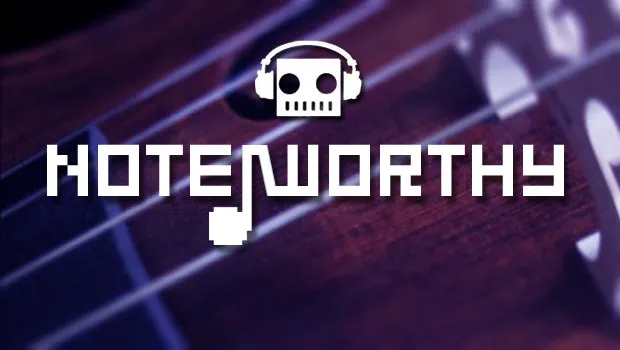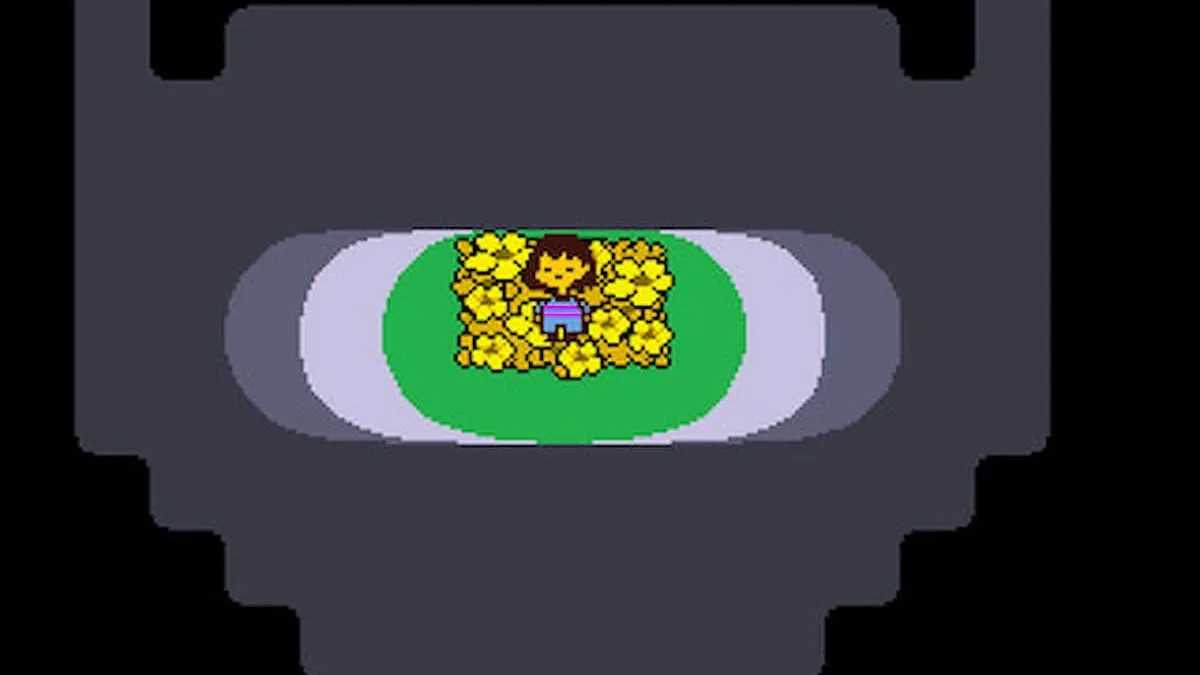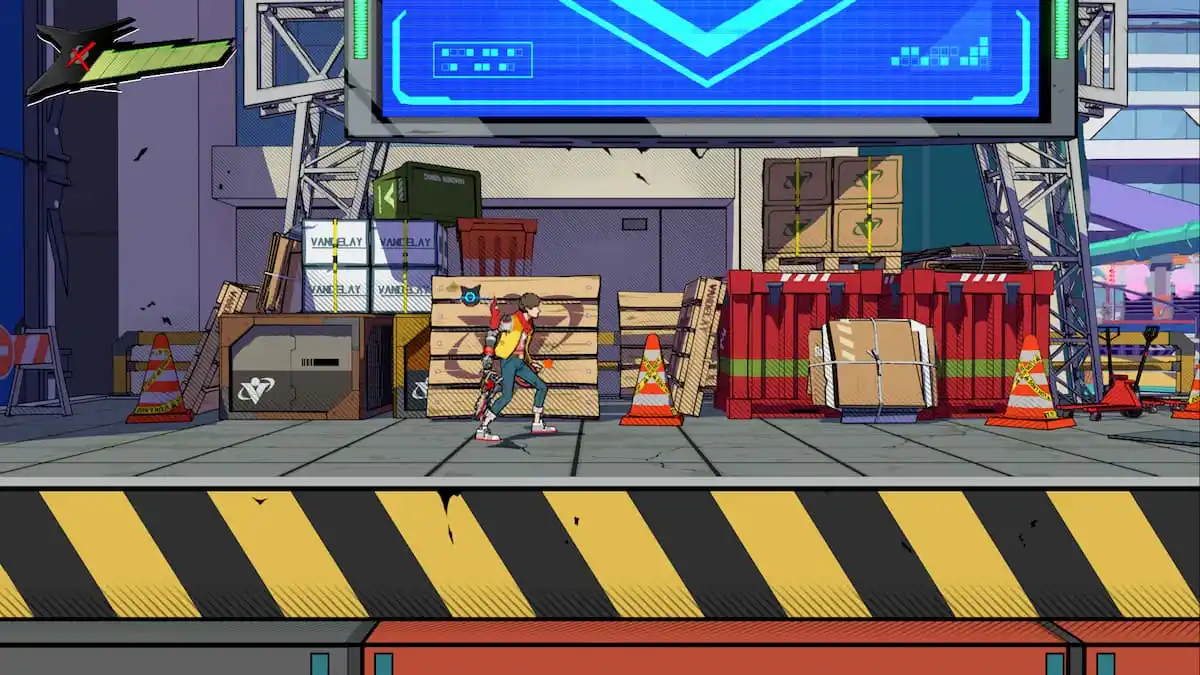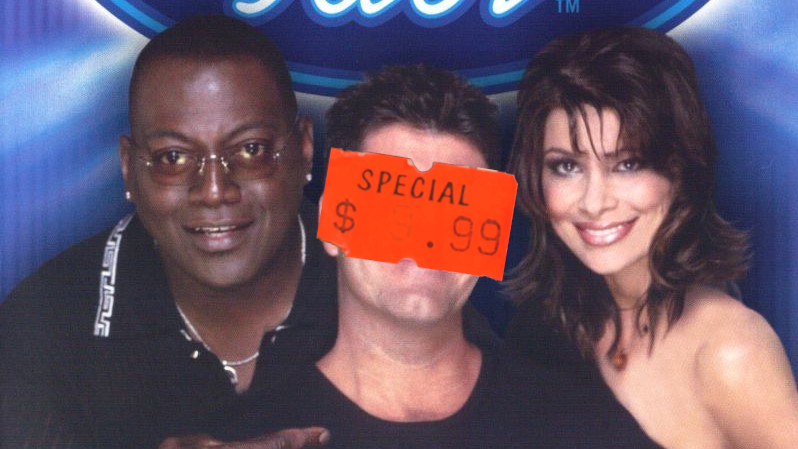As promised, we’re back with another installment of Note Worthy, Destructoid’s newest feature that digs deep into the music from some of the latest games as well as older ones that deserve some attention. This month we take a look at Fez, Ridge Racer (Vita), TERA, Silent Hill: Downpour, and Skullgirls along with some oldies, and my surprise favorite of the month, Black Ocean by IMERUAT.
So read up, listen to some samples courtesy of Destructoid’s Soundcloud page, and let us know what you think of this month’s offerings.

Black Ocean
Release Date: April 25, 2012 (JP) / May 2012 (EU)
Price: 2,800 Yen ($34) / 20.00 EUR ($26)
Availability: Amazon Japan / Wayo Records
Artist(s): IMERUAT (Masashi Hamazu, Mina)
While this isn’t a game soundtrack, involvement of composer Masashi Hamauzu (Final Fantasy XIII, SaGa series) makes this one more than note worthy. After Hamauzu’s departure from Square Enix after the completion of Final Fantasy XIII, he founded a group with vocalist Mina that explores a somewhat experimental sound utilizing Hamauzu’s signature piano and strings work along with Mina’s versatile vocals that come in English, Japanese, and her native Ainu. Square Enix’s Mitsuto Suzuki is also featured prominently as an arranger on the album, so there are dreamy electronic soundscapes to be found as well.
The group released a single in 2011 that was one of my favorite releases of the year, and Black Ocean, their debut album, features the three tracks featured on that single plus ten more. The title track, “Black Ocean,” is a perfect opener with its pairing of electronic and orchestral elements, with thunderous percussion and Mina’s ethereal voice. I’d use the words otherworldly and experimental to describe the rest of what follows. There’s the incredibly soothing “Cirotto” and “Haru no Kasumi,” the playful “Leave me alone” with Hamauzu’s signature piano work and some silly vocal stylings, the strange “Left” with a heavy Mitsuto Suzuki influence and telephone tones, the pop-oriented “Morning Plate,” and the quirky “Battaki.” I also appreciate the solo piano and strings closer, “Springs,” but my two favorites are the six-minute long “6muk” with pumping bass drums and beautifully layered electronics (and a springy sound that’s right out of a spaghetti western) and the rockin’ “IMERUAT” which throws in everything from guitar, piano, strings, strong vocals, and pads in a powerful explosion of emotion.
This is easily one of the most important releases of the year, and everyone needs to check it out. This is pretty groundbreaking stuff, and is a fitting next venture for somebody as talented as Masashi Hamauzu.

Fez Original Soundtrack
Release Date: April 20, 2012
Price: $7
Availability: Bandcamp
Artist(s): Disasterpeace
I wasn’t really sure what to expect from the Fez soundtrack, but man is it powerful. The opening track, “Adventure,” is somewhat unassuming with a simple arpeggio and upbeat melody, but the album quickly takes a turn for the more ambient and textural and truly becomes more about the entire listening experience that spans over an hour rather than the individual tracks contained within. Each track flows into the next, blurring the lines between where one ends and the next begins. What’s really fascinating, however, is that the single-word track titles are so incredibly descriptive of what’s contained within that it’s hard to decide whether the emphasis is on the individual or the whole.
Take the mysterious “Puzzle,” the ethereal and unsettling “Beyond,” or the dreamy “Flow.” The soundtrack becomes very loose and atmospheric, making a soothing backdrop for whatever else you may be doing while listening (for me, it was driving a long distance). There’s very little use of percussion to the point that when it does appear suddenly in “Sync,” it’s a bit jarring. I love the foreboding “Fear,” the healing and angelic “Spirit” and “Nature,” the somber “Death,” and the oppressive “Pressure” which features the constant presence of static. Both “Age” and “Reflection” are contemplative, coming towards the end of the album, and my two favorite tracks, “Majesty” with its triumphant melody and the heartfelt “Love” make great closers.
It’s interesting, but just listening to the album from start to finish, I feel as though I’ve accomplished something great. This is a true masterpiece from Disasterpeace, and I think everyone needs to give it a listen.

HALO: REACH ORIGINAL SOUNDTRACK
Release Date: September 28, 2010
Price: $15.98
Availability: Sumthing Else Music Works
Artist(s): Martin O’Donnell, Michael Salvatori, C Paul Johnson, Stan LePard
This is an older release, but I was never able to write about it as another writer at OSV handled the review. This was my favorite Halo soundtrack, so I was looking forward to digging in for myself. True to past soundtrack releases from the franchise, the music is presented in lengthy suites that contain several pieces and cues for a given stage, ranging from five to twelve minutes in length. This is great in letting the listener re-live the game through the soundtrack, but bad for those only looking for that one magical moment that they remember from the game.
While Reach brought a lot of new ideas to the table with rock instrumentation and even some Middle Eastern-inspired melodies (or not Middle Eastern, as Marty O’Donnell explains here), there is still enough emotional orchestra, tribal percussion, and even a touch of the familiar Halo theme worked in here and there if you listen for it. What surprises me is that I recall while playing the game certain bits of music that made me think, “Wow, I can’t wait to have this on CD,” only to find that it’s just a 20-30 second snippet of music here. That just reinforces how powerful this soundtrack is in-game, and I had a blast listening to it on CD. In fact, I feel like I could play through the game once again, this time on legendary!
I’ll quickly say my favorite pieces are the riveting “Tip of the Spear,” the desperate “New Alexandria,” and the nostalgic “The Package.” There are also several bonus tracks found at the end, including a nice remix of “Uphill, Both Ways” from Halo 3: ODST.
If you’re going to check out a Halo soundtrack, this is the one in my opinion. I don’t know how O’Donnell was able to keep things so fresh after four previous installments, but he somehow did, and it’s a great sendoff for O’Donnell and Bungie.

LIVE A LIVE Original Soundtrack
Release Date: May 2, 2012
Price: 2,100 Yen ($26)
Availability: CD Japan / Play-Asia
Artist(s): Yoko Shimomura
Square Enix (then Squaresoft) published many soundtracks through the 1990s and early 2000s that have since gone out of print and have disappeared into the void. LIVE A LIVE is one such album. While Square Enix has re-released some of these as cross-promotions for their franchises and composers, I can’t think of a specific reason we’re seeing this one now, although I’m not complaining in the slightest.
LIVE A LIVE is one of Yoko Shimomura’s first soundtracks at Squaresoft. Beforehand, she worked at Capcom on titles like Breath of Fire and Street Fighter II, but LIVE A LIVE marked her first big project as the sole composer on a Squaresoft title. While most tracks fall under the two minute mark, leaving little time for serious song development, there are some great melodies here, and of course, that lovely SNES sound that will remind you of other Squaresoft titles from this era.
From the bombastic opening notes of “LIVE-A-LIVE,” you know you’re in for something special. There’s the funky Asian-flavored “Secret of Mission” and “Sound of Shinobi,” the more subdued “The Bird Flies in the Sky, The Fish Swims in the River,” the rockin’ “KNOCK YOU DOWN!,” the upbeat and cheery “Nice Weather, Ain’t It!,” and the chippy “CAPTAIN SQUARE.” Shimomura even goes wild West with “Under the Fake” and “THE WILDS.” There’s the token emotional track, “CRY-A-LIVE” and some killer organ work in “The Demon King Odio” and “ARMAGEDDON.” The bubbly ending theme, “Live for Live” will melt your heart, and the two bonus remix tracks that were originally included with a strategy guide published in 1994 are also both presented here. “Batlissimo,” treads on 80s pop, flamenco, and 80s rock territory, while “Forgotten Wings” features piano and strings for a more emotional approach.
While I’m told this game is amazing (people say this about anything released in Japan only, though) and would like to see it released someday, the music composed by Yoko Shimomura can be understood universally. Those who are curious about the game or are fans of Shimomura may want to check it out.

Odin Sphere Original Soundtrack
Release Date: April 18, 2012 [Reprint]
Price: 3,360 Yen ($46) / $19.99 (digital)
Availability: CD Japan / iTunes
Artist(s): Hitoshi Sakimoto, Masaharu Iwata, Mitsuhiro Kaneda, Kimihiro Abe, Manabu Namiki
The year 2007 was an incredibly prolific year for Hitoshi Sakimoto, seeing the release of Final Fantasy XII: Revenant Wings, Grim Grimoire, Deltora Quest, ASH: Archaic Sealed Heat, Final Fantasy Tactics A2, Opoona, and Odin Sphere. It also marked the beginnings of Basiscape, Sakimoto’s sound studio featuring a talented team of composers. Odin Sphere in particular also marked the beginnings of Sakimoto’s partnership with Vanillaware (his name was even used on the back of the game as a selling point).
This is actually a reprint of the 2-disc soundtrack from Basiscape Records. What you have is a transitional work between what Hitoshi Sakimoto and Masaharu Iwata were already doing together on games like Ogre Battle and Final Fantasy Tactics and their more recent collaborative works with the entire Basiscape team on titles like Opoona and Muramasa.
The Odin Sphere soundtrack is a little rough around the edges. I don’t feel that there are very many complex ideas, and the melodies don’t particularly stick with you. In fact, they can get annoying after hearing them over and over again when getting stuck on a particular stage in the game. I do dig the pretty main theme with its female choral singing, and the two arrangements of this theme that come at the end of album are fantastic. Also of note are “Tutorial” which sports a catchy melody and a bouncy harpsichord, the upbeat ”Mysterious Town Pooka” with its jumpy pizzicato strings, “The Country of Death – Second” with its haunting choir and startling sound effects, and the playful “The Fairy Country – Second” by Manabu Namiki. It’s really impressive how some of the Basiscape members are so effectively able to mimic Sakimoto’s signature orchestral style.
This isn’t Basiscape’s best work, although I understand if some people enjoy it based on their attachment to the game itself. The price tag is a bit steep, although you get a nice package for the price (I love the cardboard slipcase with artwork by Vanillaware’s George Kamitani).

RIDGE RACER – PLANETARY SOUNDS
Release Date: March 26, 2012
Price: 2,625 Yen ($33)
Availability: CD Japan
Artist(s): Hiroshi Okubo, Taku Inoue, Rio Hamamoto, Ryo Watanabe, Yuu Miyake, sanodg, AJURIKA, Kyoko Miyakura, SamplingMasters MEGA, SamplingMasters AYA
This is the soundtrack for Ridge Racer on the PlayStation Vita. As usual, a diverse team at Namco Bandai is joined by SuperSweep to provide a hard-hitting electronic soundtrack. We get a dreamy opening track followed by two of my favorites, the feel-good “Planet” and the incredibly catchy “Into the Lead” with its repeated lyric, “Slide through the curves / Drift into the lead.” The funky bass in “Future Driven” and the fat encompassing pads in “Virtuoso” also stand out. “Take You Away” has an fun melody, while “Super Acceleration” is the catchy electronic music I wanted to hear more of on this soundtrack.
And that’s the bottom line. I didn’t feel there were enough melodies here to draw me in as there has been in past Ridge Racer titles. This works in the game, or maybe driving fast in your car, but the melodies aren’t strong enough for outside listening. Those who purchase the disc directly from SuperSweep in Japan, however, get a 55-minute continuous mix version which I believe is the definitive way to listen to this soundtrack as each piece flows into the next in a well thought-out way that’d be great for a party. But that’s only if you can get your hands on the bonus disc.

Shinobi 3D Original Soundtrack
Release Date: January 25, 2012
Price: 2,625 Yen ($32)
Availability: Amazon Japan
Artist(s): GEM Impact (Norihiko Hibino, Takaharu Izutani, Yoshitaka Suzuki), hiro
Soundtracks form the Shinobi franchise have always been favorites among fans, so despite the fact that Shinobi 3D was either ignored or not reviewed favorably by the gaming press, I thought it was worth checking out the soundtrack. Composed by GEM Impact, the composer team behind the scenes of many Metal Gear Solid soundtracks and Ninja Blade, the studio definitely has the experience to make this work.
What you have here is electronic-infused ninja rock of the highest quality. There is also extensive use of shakahauchi (a Japanese woodwind instrument) and other ethnic Japanese instruments to give the whole score a strong Japanese vibe. You get that big, epic orchestral sound from Metal Gear Solid in the opening theme, “Stillness,” then rockin’ electric guitar paired with pumping electronic percussion in tracks like “Oboro Village” and “Yuki Onna.” The adrenalin surging “Kryoborg,” the explosive rock extravaganza “BioShark,” and the synthtacular “Lava Crawler” also stand out, and I think it’s awesome that the main theme is worked into several of these tracks for continuity. As bonuses, there’s also a concept version of “Stillness” and a “Shinobi Style” remix of the After Burner theme which is also featured in the game.
There’s some great music here. Moody, cinematic, rockin’, and even some great melodies. It’s certainly one of the best quality soundtracks out there on the Nintendo 3DS. You’ll be hearing more of Norihiko Hibino on the 3DS as he’s the recording director for the live talent on Etrian Odyssey IV, so look forward to that as well.

Silent Hill: Downpour Original Soundtrack
Release Date: March 13, 2012
Price: $14 USD
Availability: Amazon
Artist(s): Daniel Licht, Jonathan Licht
This is one that fans have been greatly looking forward to. Not because Daniel Licht’s score, but mostly to validate their opinion that without Akira Yamaoka, the Silent Hill franchise is doomed. This turns out not to be true at least in terms of the soundtrack as Daniel Licht does an amazing job creating an appropriately dark and textural backdrop for the game. His use of exotic instruments like mandolin and tribal percussion also went far to transporting me into the game through its music.
The opening track, “Silent Hill” by Jonathan Davis of Korn is in line with that band’s material, and while fans may hate it, it’s not meant to be a big part of the game. Series vocalist Mary Elizabeth McGlynn is apparently also featured, although I had trouble picking her out. Don’t expect the grungy rock stylings that Akira Yamaoka brought to the table. My two favorite tracks would be “Meet JP” with its beautiful yet mysterious harp runs and “Monastic Tendencies” with its throaty choral chanting and organ. You also might appreciate “Clowning Around With Monsters” in the context of the game with its evil clown laughs, overdriven guitar, and crunchified percussion.
Overall, a strong effort that has me looking forward to what Licht does with Book of Memories regardless of what I think of the game itself.

Skullgirls Original Soundtrack
Release Date: April 21, 2012
Price: $9.99
Availability: iTunes
Artist(s): Michiru Yamane, Vincent Diamante, Blaine McGurty, Brenton Kossak
The much-anticipated soundtrack for Skullgirls was put on everyone’s radar when it was announced that Castlevania queen Michiru Yamane was signing on to work on the game. Little did we know that Flower’s Vincent Diamante and Retro Remix Revue’s Blain McGurty would also be on board to provide an amazingly snazzy jazz soundtrack.
Michiru Yamane handles the main theme and stage themes, with the main theme sounding like a choral singing spoof on Stevie Wonder’s “Part Time Lover,” and her stage themes cover a lot of territory from the aforementioned jazz to some more electronic-oriented offerings. My favorites from her are probably the pumping electronic “Paved With Good Intentions” and the oh-so-smooth “The Lives We Left Behind.” Honestly, however, I think Diamante and the McGurty/Kossak duo outshine Yamane’s contributions. I love McGurty/Kossak’s sexy “Pick of the Litter” and the swanky “A Roll of the Dice,” and all of Diamante’s contributions are pure genius, showing a true mastery of the jazz genre. The laid-back and reflective “Forgotten Moments” is probably my favorite from him.
While I have to admit I’m a bit let down by Yamane’s contributions (people will be left wanting something more Castlevania-flavored), on a whole, this is a great jazzy soundtrack, and there aren’t nearly as many of those out there as I’d like to see.

TERA The Exiled Realm of Arborea Original Soundtrack Part 1
Release Date: May 1, 2012
Price: $79.99
Availability: Collector’s edition bonus
Artist(s): Inon Zur, Rod Abernethy
I think North America kind of got a bum deal on the collector’s edition of TERA. While those in Europe are enjoying their fancy cloth map, a real book instead of a floppy manual, and an audio CD, the fact that the soundtrack released in North America is actually a data disc means there are 50 tracks as opposed to 26. With music composed by Inon Zur and Rod Abernethy, you’re in for an epic journey.
Well, that’s to say that there’s a lot of big, bombastic orchestral music here. While it doesn’t make for the most exciting outside listening (you’ll feel like you’ve heard this all before in countless fantasy games and films), it works wonders in the huge and beautiful environments of the game. Whether exploring the vast wilderness or an exotic locale, the music makes for a great accompaniment. I actually dig the more mellow tracks, including “High Elf – The Children of Karas” with its sweeping strings and angelic choir, the upbeat “Elinu’s Dance,” and the majestic and powerful “City of Truth.” “Solitude” and “Catacomb” really hit the mark for dark and dangerous while “Tulufun Nights,” “To the Oasis,” and “Sailor’s Horn” take a turn for the more exotic. Finally, both “Turnabout” and “Watchtower Panorama” sport some impressive guitar work that should catch your ear both inside and outside the game.
As a free soundtrack included with the collector’s edition I can’t really complain, although the presentation leaves much to be desired. It doesn’t come in its own jewel case, but rather is the fourth disc found in the disc tray under the game discs. Still, I’ll be watching to see if there’s a Part 2, as MMOs like this tend to have huge amounts of music.




